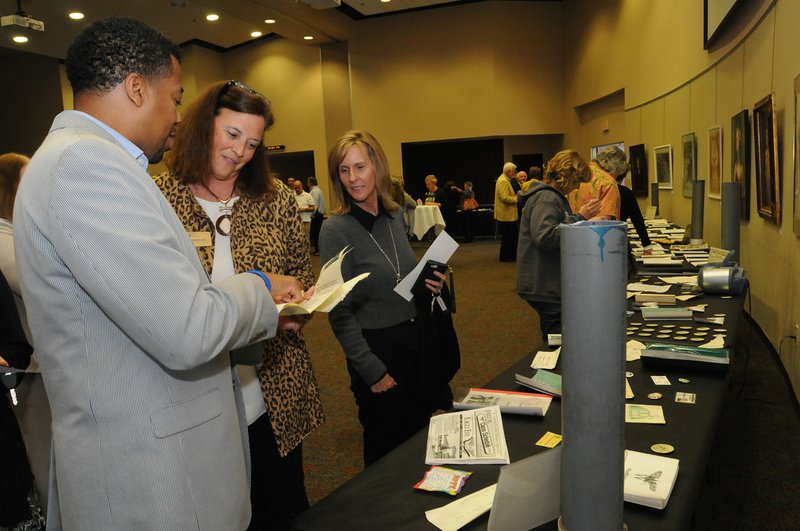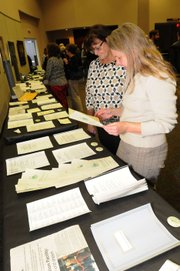BENTONVILLE -- Documents and memorabilia from Northwest Arkansas Community College's past will be more accessible to the public through a deal involving the Rogers Historical Museum.
The museum will assume control of most items buried in a college time capsule in 1995. The college dug up the capsule and put its contents on display for the public during a special event in October as part of the school's 25th anniversary celebration.
Time capsule II
Northwest Arkansas Community College plans to bury its next time capsule during a ceremony slated for May 6. The capsule will be scheduled for retrieval in the fall of 2040, said Steven Hinds, college spokesman.
The college is collecting items for the capsule at the president’s office and the foundation’s office, both on the third floor of Burns Hall.
Source: Staff report
"This is the museum's mission, to help preserve and share our heritage and history, and the history of NWACC is an important part of this community," said John Burroughs, museum director.
Jami Forrester, a professor of Arkansas and U.S. history, initiated a discussion of what to do with the capsule's contents after they were unearthed.
"I asked what was going to happen to these items and was told they didn't really have a plan at that time," Forrester said. "I wanted to make sure that collection was maintained."
So Forrester set up a meeting between museum officials and the college's 25th anniversary committee.
The college and museum are forging a memorandum of understanding detailing an arrangement in which the college will lend the items to the museum. Officials likely will sign that agreement some time this spring, according to Steven Hinds, the college's director of public relations and marketing.
The college has put some of the items on display in Burns Hall, but Hinds estimated they account for less than one-fourth of all material from the time capsule.
The college doesn't have space for all of the material, but it could request the museum return those items if space ever does become available, Hinds said.
Building keys, business cards, class schedules and programs from the groundbreaking for Burns Hall are among the many items that were included in the time capsule. There also was a letter written by founding president Bob Burns in 1995, intended to be read by the president when the time capsule was opened in 2015.
The museum has no definite plans for an exhibit of the college's items, Burroughs said.
"That will be determined as we go forward, when we get a chance to evaluate the collection," Burroughs said. "The first goal is to get the collection and preserve it."
The collection will be archived and made available to researchers, probably in a digital form, he said.
The museum is preparing to expand across the street from its current location at 322 S. Second St. The city recently bought the old Rogers Morning News building for the museum, allowing the museum to more than double its space. The museum has about 50,000 pieces in its collection, according to Burroughs.
Cooperation between the museum and college is showing up in other ways. The museum has agreed to participate in a course on public history, which Forrester plans to launch this fall, she said.
Public history describes "the many and diverse ways in which history is put to work in the world," according to the National Council on Public History website. Museum professionals, archivists, curators and cultural resource managers all are examples of public historians.
NW News on 02/11/2016


